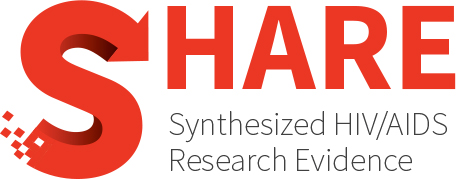Category Archives: Income
Mental health burden among females living with HIV and AIDS in sub-Saharan Africa: A systematic review
Mental health problems, particularly depression and anxiety, are common in women and young girls living with HIV/ AIDS particularly in low- and middle-income (LMICs) countries where women’s vulnerability to psychiatric...
Patient-reported outcome measures in adult HIV care: A rapid scoping review of targeted outcomes and instruments used
Objective There is international interest in the integration of patient-reported outcome measures (PROMs) into routine HIV care, but little work has synthesized the content of published initiatives. We conducted a...
Systematic review of neighborhood factors impacting HIV care continuum participation in the United States
Social determinants have been increasingly implicated in accelerating HIV vulnerability, particularly for disenfranchised communities. Among these determinants, neighborhood factors play an important role in undermining HIV prevention. However, there has...
How much does HIV self-testing cost in low and middle income countries? A systematic review of evidence from economic studies
OBJECTIVES: HIV self-testing (HIVST) has been proposed as an innovative strategy to diagnose human immunodeficiency virus (HIV). While HIVST offers the potential to broaden accessibility of early HIV diagnosis and...
Barriers and facilitators for interventions to improve ART adherence in Sub-Saharan African countries: A systematic review and meta-analysis
BACKGROUND: The HIV/AIDS pandemic remains a significant public health issue, with sub-Saharan Africa (SSA) at its epicentre. Although antiretroviral therapy (ART) has been introduced to decrease new infections and deaths,...
Pre-exposure prophylaxis care continuum for HIV risk populations: An umbrella review of systematic reviews and meta-analyses
Pre-exposure prophylaxis (PrEP) is an effective biomedical strategy for HIV prevention. This umbrella review is aimed at providing a comprehensive summary of the current status of each stage of the...
Interventions to enhance healthcare utilisation among pregnant women to reduce maternal mortality in low- and middle-income countries: a review of systematic reviews
BACKGROUND: Maternal mortality in low- and middle-income countries (LMIC) has reduced considerably over the past three decades, but it remains high. Effective interventions are available, but their uptake and coverage...
The experience of healthcare workers to HIV pre-exposure prophylaxis (PrEP) implementation in low- and middle-income countries: A systematic review and qualitative meta-synthesis
BACKGROUND: The effectiveness of pre-exposure prophylaxis has been extensively documented. However, there are substantial gaps between the actual implementation of pre-exposure prophylaxis and the ideal goal, especially in low-and middle-income...
The impact of multiple-behavior HIV interventions as a function of regional disadvantages: An analysis of syndemics
OBJECTIVE: Disadvantaged populations, including inhabitants of developing countries as well as racial/ethnic and sexual minorities in the United States, are disproportionally burdened by human immunodeficiency virus (HIV) infection, delayed HIV...
Barriers to uptake of PrEP across the continuum among transgender women: A global scoping review
BACKGROUND: Although preexposure prophylaxis (PrEP) has demonstrated high efficacy for HIV prevention, rates of PrEP uptake remain low among the transgender population, especially in transgender women (TGW). We conducted this...
Health inequalities in infectious diseases: A systematic overview of reviews
OBJECTIVES: The aim of this systematic overview of reviews was to synthesise available evidence on inequalities in infectious disease based on three dimensions of inequalities; inclusion health groups, protected characteristics...
